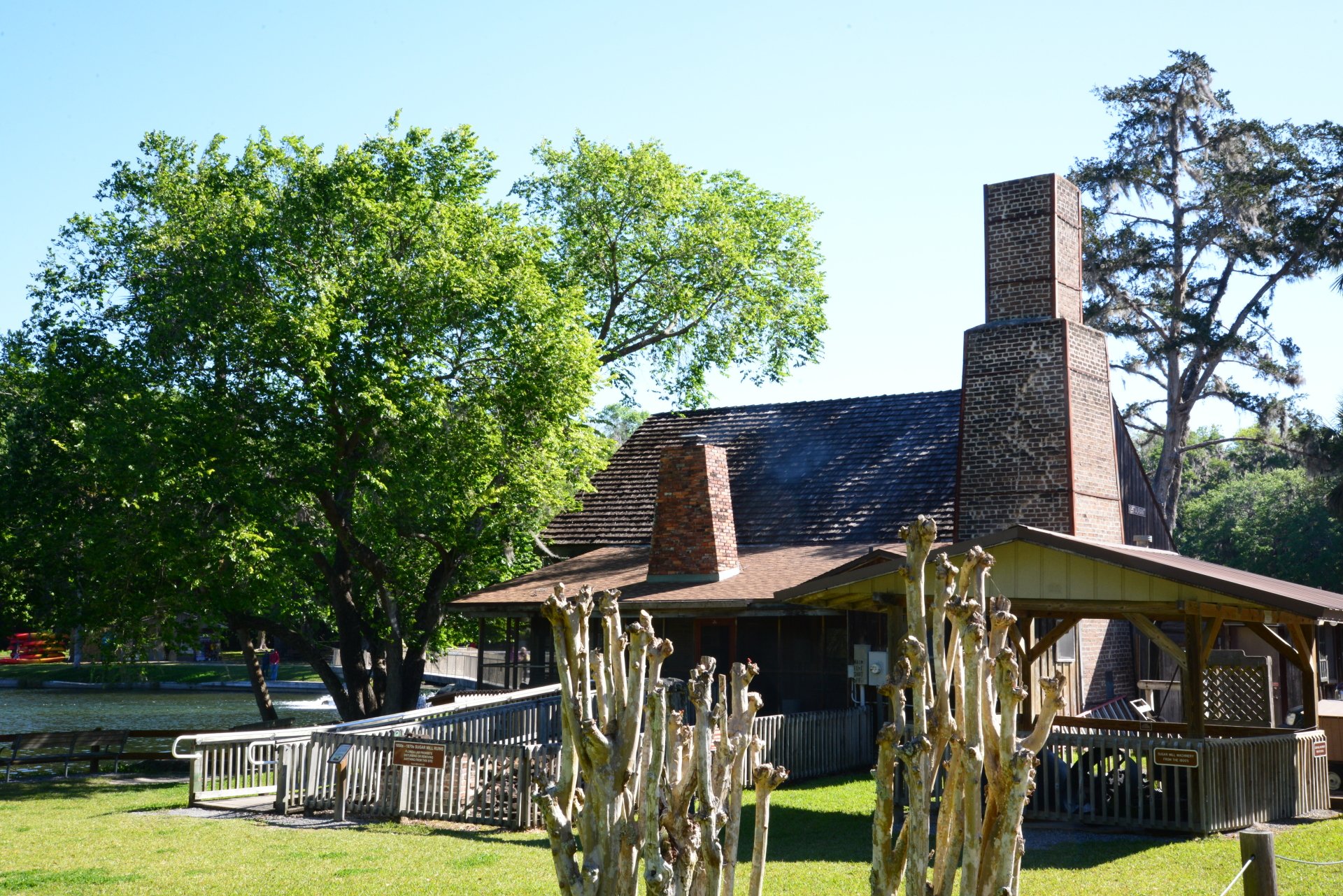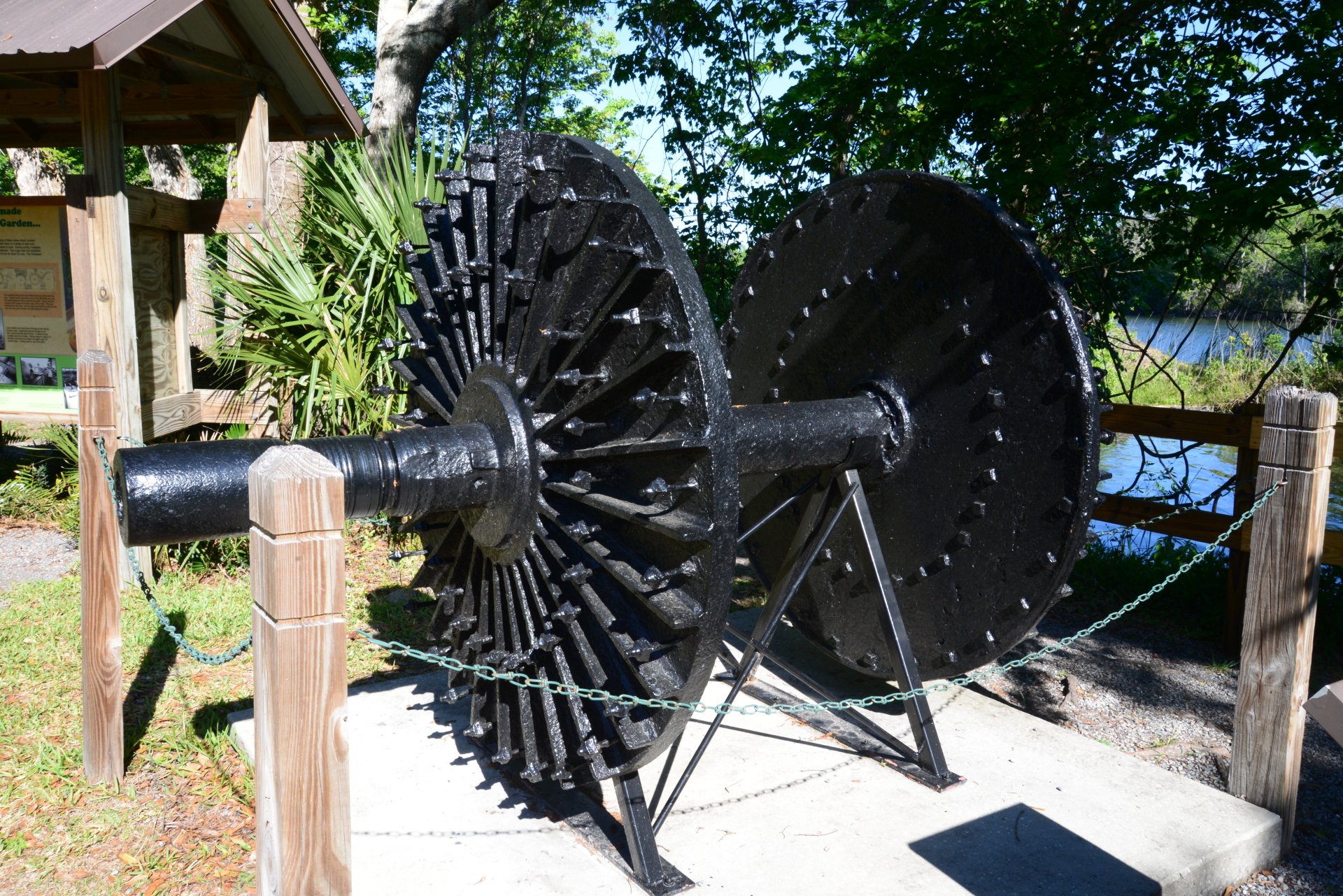
Old Rees Sugar Mill
According to printed information by the Florida Division of Recreation and Parks, the first Spanish to arrive here were friars in the 1590s. In 1779 during the period of time the British occupied Florida (1763-1783), the British firm of Panton, Leslie & Co. which specialized in the Indian Trade received a 500 acre land grant which included De Leon Springs. In 1804, during the Second Spanish Period (1783-1821) and after Panton, Leslie & Co. had left the area, William Williams received a land grant from the Spanish Government and named the land received Spring Garden, he was the first one to raise corn and cotton here.
In 1823 Maj. Joseph Woodruff, a planter from South Carolina bought 2,020 acres from Williams for $3,000, Woodruff owned the property until his death in 1828 while returning from a trip to New York to purchase sugar making equipment.
In 1830 Col. Orlando Rees acquired the property from the Woodruff family. With 90 slaves, Col. Rees constructed the only water-powered sugar mill in Florida. In 1836 during the Second Seminole War, the Seminoles attacked the Rees Plantation killing a nephew of Woodruff, destroying the mill and buildings and stealing slaves and cattle. The indians held the plantation lands for two years until expelled by the US Army when Joseph Woodruff, another nephew of Maj. Joseph Woodruff, led a militia force against the Seminoles forcing them from the area.
In 1849 Thomas Starke bought the Rees Plantation, he rebuilt and enlarged the sugar mill and added a cotton gin. In the 1850s his son, John Starke converted the sugar mill to a grist mill still powered by water. In April 1864 during the Civil War, Union troops under the command of Gen. William Birney destroyed the plantation and the mill. In 1872 Maj. George Norris of Batavia, NY bought the property and rebuilt the mill. In the 1880s the railroad reached the area and to attract tourists, Norris operated a steamboat to bring passengers from the St. Johns River and built a small tourist attraction he named De Leon Springs. In 1982 the State of Florida acquired the property converting it to a State Park.
The water wheel and building remain on the site to this day. In the early 1900s, a replica of the original mill building was constructed on the foundation of the original 1830s mill. This building now houses a pancake restaurant called the Old Spanish Sugar Mill. The large chimney still standing dates back to the mid-1800s. The remains of the plantation era sugar-making operation consist of brickwork and kettles from the Spanish Train used to process sugarcane juice, mill tools and machinery parts and the original mill wheel hub.










